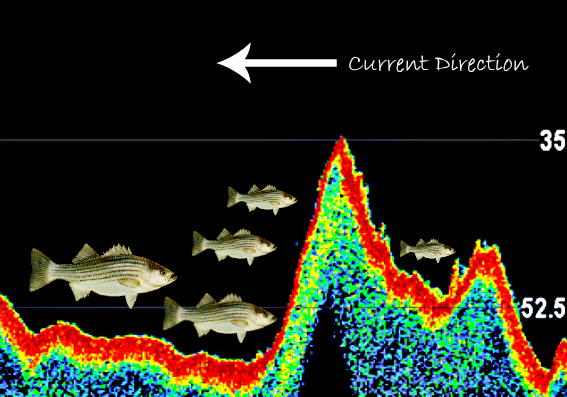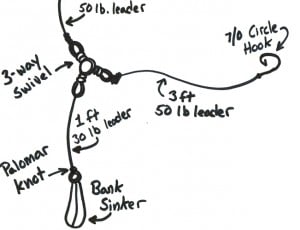Striped bass pretty unique creatures if you stop to think about it. What other fish species can be targeted in open water, up tight to the beachfront, in rivers, harbors, bays, canals, estuaries, rips, rock piles, shoals, and drop-offs as well as in a variety of other interesting environments.
Without a doubt the striped bass is a very dynamic and opportunistic fish species.
Maybe this helps to explain why so many striped bass flock to Cape Cod each season. The Cape has just about every striped bass environment imaginable. Stripers can be found from the boulder strewn coastline of the Cuttyhunk Island to the tidal flats of Cape Cod Bay and virtually everywhere in between.
Striper Fishing in Deep Water with Strong Currents
Some of the most unique Cape Cod striped bass fishing environments are deep water places with swift currents. In particular I am envisioning the East and West ends of the canal, Race Point, deep spots around Monomoy, Quick's Hole, and numerous other channels and deep water spots.
These types of areas present an interesting feeding opportunity for stripers and often attract big striped bass like clockwork.
Of course there are never any guarantees when it comes to striped bass. However bass do seem to behave with a reasonable amount of predictability when they settle into rips and areas with intense current-especially contrasted to how they behave in open water, structure-less zones.
In my experience the best fishing in current laden areas occurs around forms of structure. A deep hole or rocky peak jutting up from the ocean bottom is a good place to start.

It's a well known fact that striped bass will utilize structure to get out of the current and conserve energy.
When the current is really cranking bass will settle down deep into a hole or behind a rocky peak. Picture it like a pedestrian using a building to block a stiff breeze. The stripers successfully get out of the current, and can still keep a keen eye out for any bait that may be tumbling by.
Usually the key for fishing these types of spots is to get your bait or jig right along the bottom, in tight to the piece of structure. This can be accomplished in many different ways; however my favorite method when the current is ripping in depths of 35 feet or greater is to 3-way live eels.
3 Way Rigs 101
A 3-way swivel is a nifty little piece of terminal tackle that can be used to present a bait to bass holding along in the bottom in deep water areas with a strong current.
The main line is tied to one arm of the 3-way, a leader and hook to another, and a sinker to the third. Basically it’s the easiest way I know of to get a big eel straight to the bottom, even when the current is cooking.

3 way swivels come in super handy when fishing current laden areas.
The most crucial component of 3-waying eels is the angler’s ability to keep the eel right along the bottom, which is usually where the bass are. Unfortunately this is also where all the snags, weeds and rocks reside.
It takes a little practice but once you get a feel for it, you can literally bounce the eel off the bottom and smack it directly into rocks without getting hung up.

